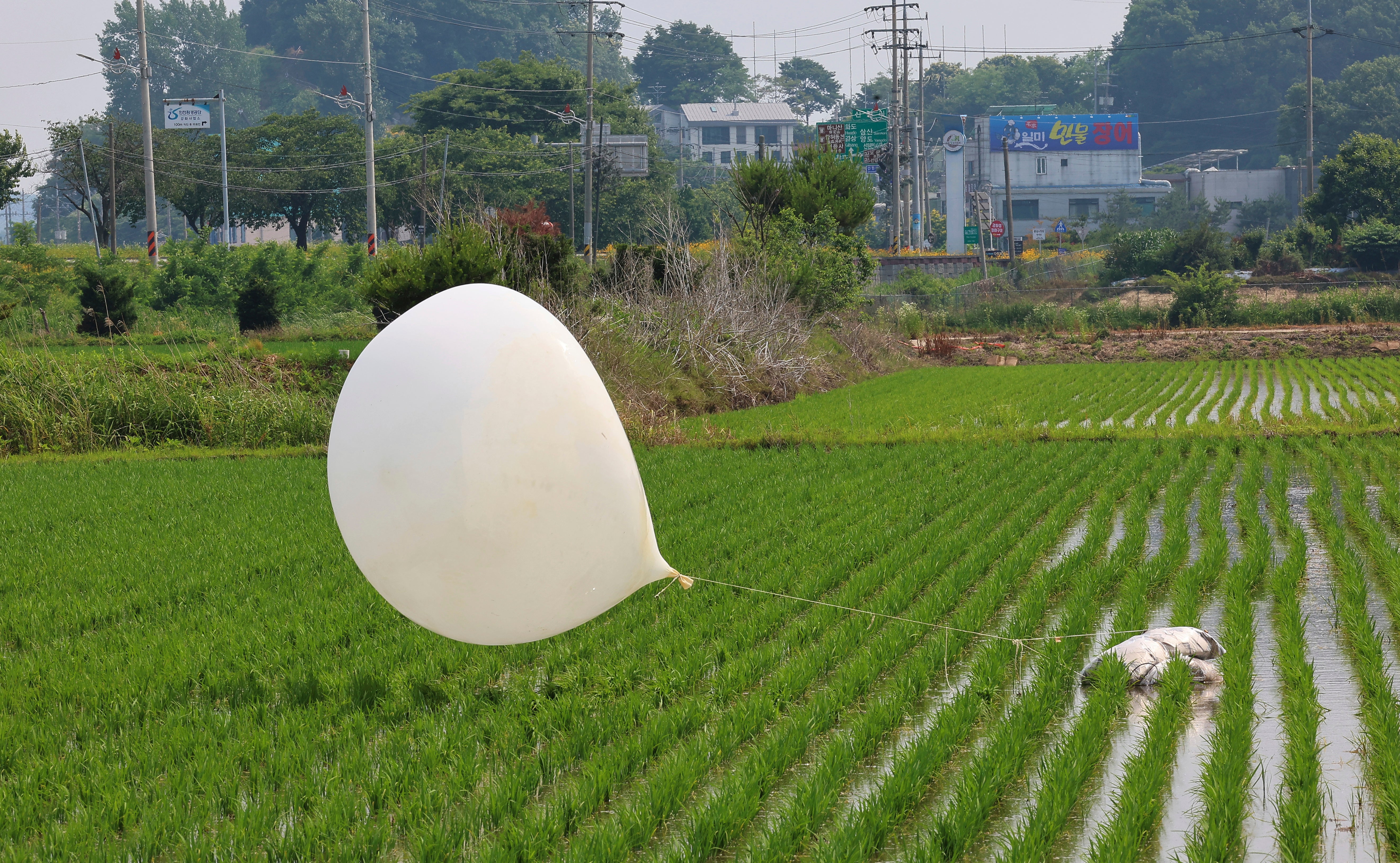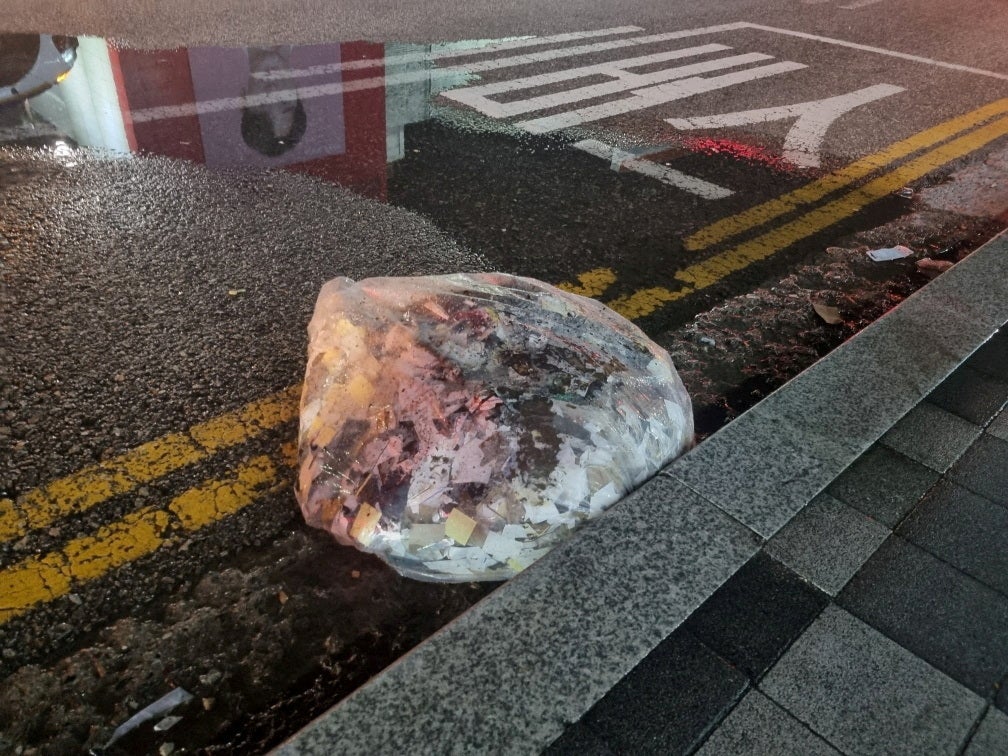North Korean trash balloon lands near South Korean president’s office
Seoul says it did not intercept latest tranche of balloons coming over the border because their contents were unknown
Your support helps us to tell the story
From reproductive rights to climate change to Big Tech, The Independent is on the ground when the story is developing. Whether it's investigating the financials of Elon Musk's pro-Trump PAC or producing our latest documentary, 'The A Word', which shines a light on the American women fighting for reproductive rights, we know how important it is to parse out the facts from the messaging.
At such a critical moment in US history, we need reporters on the ground. Your donation allows us to keep sending journalists to speak to both sides of the story.
The Independent is trusted by Americans across the entire political spectrum. And unlike many other quality news outlets, we choose not to lock Americans out of our reporting and analysis with paywalls. We believe quality journalism should be available to everyone, paid for by those who can afford it.
Your support makes all the difference.A trash-filled balloon sent by North Korea fell inside the compound of South Korea’s presidential office, marking the most serious escalation yet in the “balloon war” between the neighbours.
The Presidential Security Service said they monitored the latest batch of balloons from the North in real time as they flew towards Seoul but didn’t intercept them midair since their contents were unknown and could have scattered.
It’s not known if president Yoon Suk Yeol was inside the compound when the balloon landed.
“An investigation by the chemical, biological and radiological response team showed the objects didn’t present a danger or contamination, so they were retrieved,” Yonhap news agency quoted the security service as saying. “We are continuing to monitor in cooperation with the Joint Chiefs of Staff.”

“It is difficult to handle midair because we do not know what the balloons may contain,” a presidential official said. “There will be no change in our policy of collecting them after they have fallen.”
It’s not known if the North uses timers or other technology to drop the balloons in strategic places such as the president’s office. If that is the case, then it would invite a strong reaction from the South.

The North has sent across nearly 2,000 balloons in 10 tranches filled with wastepaper, cloth scraps, cigarette butts and even manure since May, causing alarm at airports and in residential areas.
Pyongyang has justified the campaign as retaliation for South Korea sending propaganda leaflets the other way.
Seoul, in turn, has restarted propaganda broadcasts over loudspeakers near the border, including K-pop songs that are banned in the North.
The presidential complex is situated in the central Yongsan area of Seoul, 56km from the demilitarized zone between the two Koreas. It has been the president’s office since 2022.

Seoul last week warned that the North would pay a “fatal price” after Pyongyang sent a new wave of balloons across the border.
“The North Korean military’s tension-escalating acts in frontline areas may lead it to pay a fatal price and we sternly warn that all responsibility for this situation lies with the North Korean regime,” said the South’s Joint Chiefs of Staff.

Join our commenting forum
Join thought-provoking conversations, follow other Independent readers and see their replies
Comments